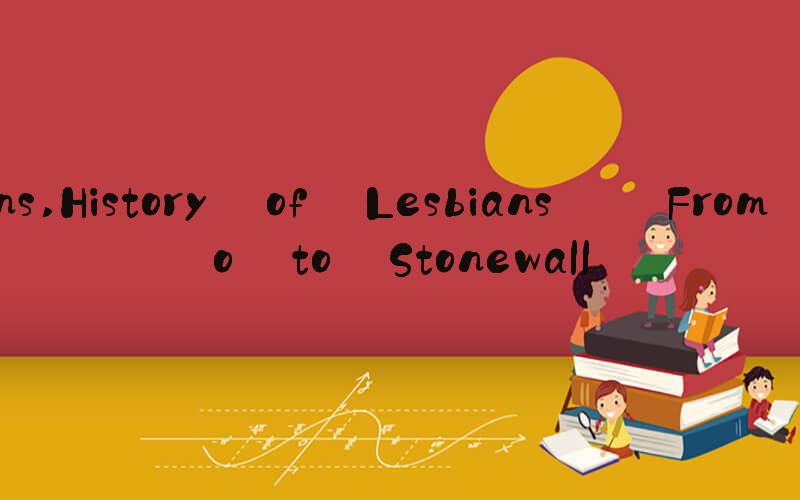AI答案
 Lesbians: Understanding and Celebrating Same-Sex Love between Women
Lesbians: Understanding and Celebrating Same-Sex Love between WomenLesbians are women who are romantically and sexually attracted to other women. Same-sex love between women has existed throughout history, although it has often been hidden or silenced due to social stigma and discrimination. However, in recent years, there has been a growing awareness and acceptance of lesbian identity and relationships, thanks to the efforts of activists, artists, and ordinary people who are challenging stereotypes and prejudices.
History of Lesbians: From Sappho to StonewallThe term "lesbian" originated from the Greek island of Lesbos, where the poet Sappho lived in the 7th century BCE. Sappho wrote love poems to other women, which were admired for their beauty and expressiveness. However, the Christian church condemned Sappho as a "perverted" and "immoral" woman, and her works were burned or censored.
In the modern era, lesbians faced similar persecution and oppression. In the 19th century, same-sex relationships between women were considered a sin and a crime, and women who were caught engaging in such activities were often punished with imprisonment, forced marriage, or electroshock therapy. It was not until the 20th century that lesbian identity became more visible and vocal, with the rise of feminist and gay movements. The Stonewall Riots of 1969, which sparked the gay liberation movement, also included many lesbians who were fed up with the police raids and harassment of gay bars.
Lesbian Communities: From Bars to Online SpacesLesbian communities have formed in various ways and places, depending on the cultural, political, and social context. In the past, lesbians often met each other through secret clubs or bars, where they could dance, drink, and flirt without fear of persecution. These venues, such as the famous lesbian bar The L Word in New York, played a vital role in creating a sense of belonging and solidarity among lesbians.
Today, lesbians can also connect with each other through online spaces, such as social media, dating apps, and online forums. While these virtual communities provide more options and convenience for lesbians who live in isolated or conservative areas, they also pose some risks and challenges, such as online harassment, catfishing, or the lack of face-to-face interaction.
Lesbian Relationships: Love, Communication, and ChallengesLesbian relationships are similar to heterosexual relationships in many ways, but also have their own dynamics and challenges. Lesbian couples can experience the same joys and struggles of love, such as intimacy, trust, and communication, but they also face the additional pressure of discrimination and heteronormativity.
Lesbian couples may have to deal with the fear of being outed or rejected by family, friends, or colleagues. They may also face legal and social obstacles when it comes to marriage, adoption, or healthcare. Moreover, lesbian relationships are not immune to domestic violence or abuse, which can be harder to detect or report due to the lack of awareness and resources.
Lesbian Culture: Books, Movies, and ArtLesbian culture has a rich and diverse history, spanning from classic literature to contemporary music. Lesbian writers such as Virginia Woolf, Audre Lorde, and Patricia Highsmith have explored lesbian themes and identities in their works, while lesbian filmmakers such as Marleen Gorris, Alice Wu, and Dee Rees have created powerful and nuanced portrayals of lesbian lives and loves.
Lesbian art also encompasses a wide range of genres and styles, from painting to sculpture to performance. Lesbian artists such as Frida Kahlo, Catherine Opie, and Tee Corinne have challenged the norms of gender, sexuality, and beauty through their art, and have inspired generations of queer and feminist artists.
Conclusion: Acknowledging and Respecting Lesbian Identity and LoveLesbianism is not just a "phase" or a "fantasy", but a valid and important form of love and desire. Lesbians are not "deviants" or "sick", but real human beings who deserve respect and dignity. By acknowledging and celebrating lesbian identity and love, we can create a more inclusive and compassionate society, where everyone can live and love freely and openly.
